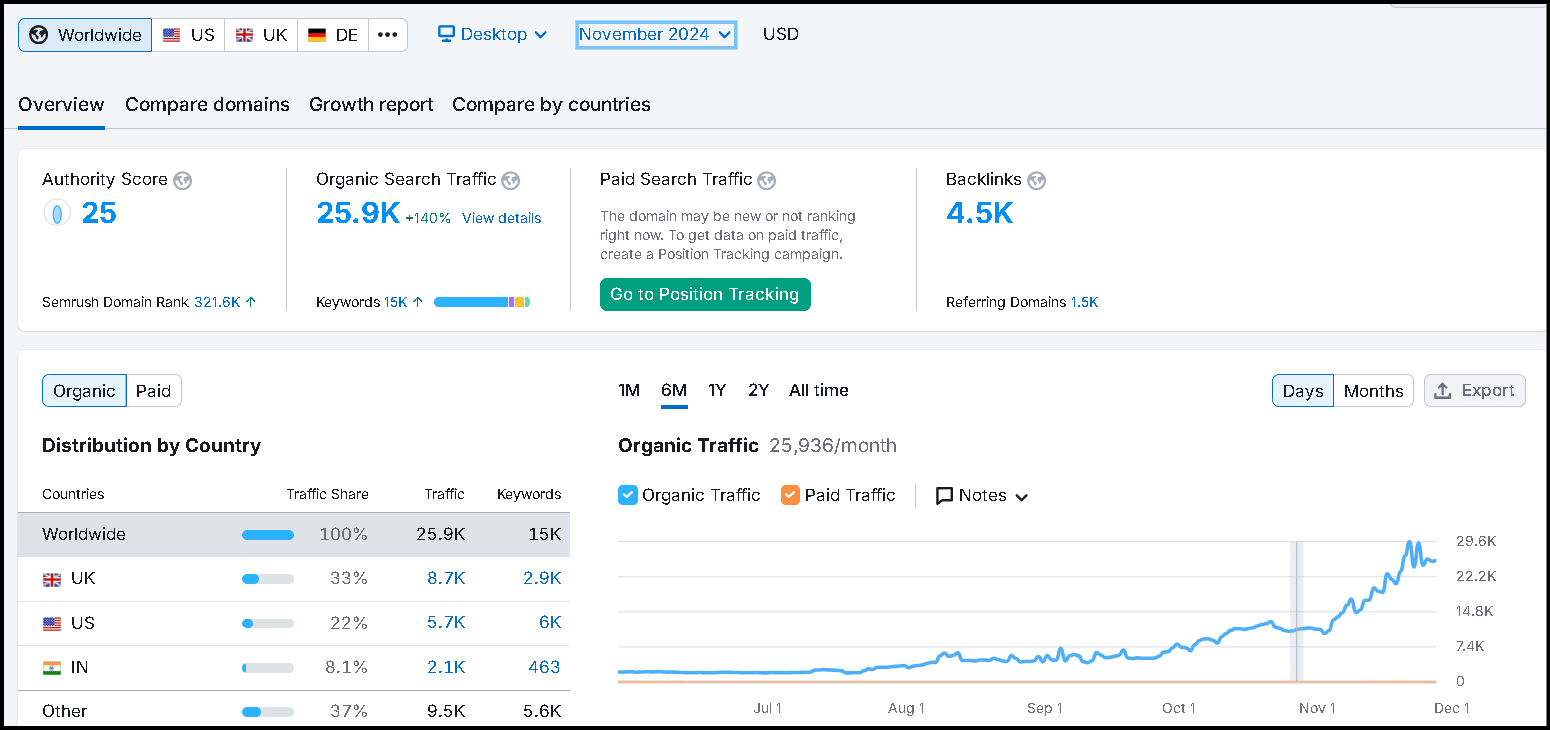1200% Increase in Organic Clicks in Just 4.5 Months (From 2k to 29.6k)
1. Keyword Research and Optimization:
- Competitor Analysis: Identifying and targeting keywords that your competitors were ranking for helped you gain a competitive edge.
- SERP Analysis: Understanding the search intent and competition level for each keyword allowed you to prioritize your efforts.
- Keyword Clustering: Grouping related keywords into clusters helped you create comprehensive and interconnected content.
2. Content Strategy and Creation:
- Structured Content: By following a specific structure, you ensured that your content was well-organized and easy to read.
- Schema Implementation: Using schema markup helped search engines better understand your content and display it in rich snippets.
- Image Optimization: Descriptive alt text and high-quality images enhanced the visual appeal and SEO of your content.
- Consistent Publishing: Regularly publishing high-quality content kept your website fresh and relevant.
3. Data-Driven Optimization:
- Performance Analysis: Tracking the performance of your content allowed you to identify areas for improvement.
- Content Updates: Regularly updating and optimizing your content based on performance data helped you maintain high rankings.
Key Takeaways:
- Keyword Research is Crucial: A solid keyword strategy is the foundation of successful SEO.
- High-Quality Content Reigns Supreme: Creating valuable, informative, and well-structured content is essential.
- Technical SEO Matters: Ensuring your website is technically sound is crucial for good search engine visibility.
- Data-Driven Approach: Using analytics to track performance and make data-driven decisions is key to ongoing success.
This continuous process got me these results.
Consistency and data-driven approach matter if you want to see exponential growth!
02 Jul 2024
Keywords
SEO
Content Marketing
Organic Traffic
Organic Marketing
Search Engine Optimization







